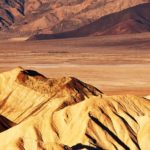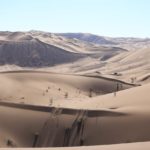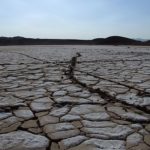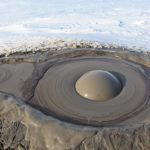The deserts, though lacking in vegetation, and even the most adaptable dandruff bushes and shrubs, cannot be settled due to high salinity, but these saline lands are deserted and seemingly useless in some potential economic areas. There are good yields that have been less attentive to these areas due to the adverse weather conditions. Here is a brief overview of Desert’s economic resources.
1- Salt: In most of the deserts of Iran, the simplest material to collect is salt. Many of the villagers on the desert border collect salt in simple ways, for example in the salt desert of Bejestan, which I have been observing. Excavating trenches direct salt water there, and after evaporation, they collect and sell salt. In the Great Salt Desert in the south of Semnan, there are huge salt domes with a purity of 99.95%, which are economically valuable, for example, the storage of one of these domes is estimated at about one billion tons. . In addition to human consumption, salt is widely used in the industry, such as in disinfection and in the preparation of sodium, chlorine, hydrochloric acid, sodium dioxide, used in textile plants to bleach fibers, in lamps, glassware. , Soap, etc. are used.
2. Chlorpotassium: Studies carried out over three years by experts from the Geological Survey of Iran, especially in the Great Desert of Iran, have shown that salt water in its playa can be extracted using potash salt solar energy and the raw material of a large plant. It provided the production of chloride or potassium sulfate with a capacity of at least 500,000 tons of concentrate per year. In addition to supplying the country’s needs, this valuable mineral can be exported overseas and can meet some of the country’s foreign exchange needs. Fungicides are widely used in the preparation of chemical fertilizers and chemicals such as potassium iodide, potassium nitrate, potassium carbonate, caustic soda, etc.
3. Sulfur: The formation of sulfur in arid and desert areas is caused by the destruction of sulfurous sedimentary materials such as gypsum and anhydrite. The mine is about 40 to 50 kilometers south of Semnan, with an estimated 7 million tons of reserves. The industrial uses of sulfur have been varied so that this material has been used in the manufacture of sulfuric acid and other compounds in the paper and paint industries for the manufacture of rubber and explosives, due to its virulence in disinfecting objects, in industries. Matches, rubber, chemical fertilizers and in agriculture are used to combat pests. Certainly there may be many other compounds in addition to the above minerals that have not yet been investigated. It is hoped that in the future we will be able to identify and exploit these potentials in the desert in the first place.
4. Tourist Attraction:
Ecotourism is a valuable phenomenon that has received little attention in our country. Planning and new investments in this field can add to the foreign exchange earnings of the country. The beautiful desert landscapes that amaze and amaze us when deserters and great geologists and natural geographers of Iran speak of their long experience can drive thousands of nature-loving tourists to Iran each year. Some countries in the world with similar conditions have made significant strides in attracting tourists.





